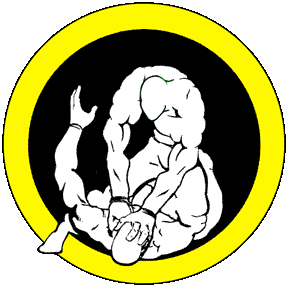THE DECLINE OF SMALL BOXING GYMS
Posted on | June 26, 2010 | 2 Comments

By: Patrick McElligott
 On Saturday, June 12, Vito Antuofermo gave one of the best speeches in the Canastota Boxing Hall of Fame’s history. The former Middleweight Champion turned actor has a great love for the sport of boxing, which is apparent not only in the amount of time he spends interacting with fans during the induction weekend, but also in the way the boxing community responds: Vito definitely had the largest crowd that day, listening to his presentation, and then asking the Champ numerous questions.
On Saturday, June 12, Vito Antuofermo gave one of the best speeches in the Canastota Boxing Hall of Fame’s history. The former Middleweight Champion turned actor has a great love for the sport of boxing, which is apparent not only in the amount of time he spends interacting with fans during the induction weekend, but also in the way the boxing community responds: Vito definitely had the largest crowd that day, listening to his presentation, and then asking the Champ numerous questions.
The most important topic that Vito discussed was the decline in the number and quality of small boxing gyms. From a man who regularly fought at Madison Square Garden, and who battled Marvin Hagler on HBO, his focus on the role that small boxing gyms and fight clubs has played in boxing is significant, indeed. Anyone who may have been unaware of this before hearing Vito speak certainly understood that after he finished.
There are, in large cities across the country, both older boxing gyms, and newer facilities, which frequently blend boxing and MMA training. The well-established older
gyms include those which are open to everyone, including youngsters interested in starting the amateur ranks; while others are more restricted, due to the facilities’ size and elite fighters. However, a young person in an urban center is generally able to access a boxing gym.
In smaller and economically depressed cities, there are fewer options. And in rural areas, there are too often no gyms at all for young men looking to participate in the Great
Sport. And the sport suffers as a result of this. There may be no better example of this than upstate, central New York State.
Boxing historian Mark Allen Baker’s newest book, “Title Town USA: Boxing in Upstate New York” (History Press; 2010) is an excellent study in how the gyms in the “upstate”
attracted the tough and talented youth from region to the Great Sport. Baker has provided a valuable history of how this, in turn, lead to the best of these fighters to reach the top rankings, and – in some cases – to win world’s titles. As a result, many boxing greats ended up fighting in classic matches in Upstate New York.
Not everyone, however, is going to be a Carmen Basilio, a Bushy Graham, or a Lou Ambers. Baker also includes information on many of the less successful fighters from different eras. These are fighters like Bucky Lawless, who fought thirteen different men who won world’s titles. Without the efforts of people such as Baker, Lawless’s contribution to boxing could easily be forgotten.
In fact, as Baker notes, the records of old-time fighters like Bucky are frequently incomplete, for a variety of reasons. These include fighters participating on cards, often
referred to as “smokers,” in which the results were not always kept track of. The reasons for this are many: there was a time when the sport was illegal in New York; a time when, barring a knockout, fights were decided by “newspaper decisions”; and some fighters were able to recall victories more easily than defeats.
I’ve noted in previous articles that fighters like Lawless, as well as Bushy Graham and Carmen Basilio, fought in the small town of Sherburne, NY. These cards included numerous other fighters from the upstate region, including Binghamton, Syracuse, Utica, and Buffalo. (I’m presently the boxing cards held in Sherburne and Norwich, which are five miles apart. This requires going beyond the internet and nearby Hall of Fame, and digging into records in local historical societies, etc. I have located a few old “fight posters,” advertising fights that have long since been forgotten.)
From the top professionals to the local favorites, these fighters are rooted in the amateur boxing that was once the most popular sport in Upstate New York. In the 1800s, when the canals and railroads brought large immigrant populations to this region, boxing could be found in every hamlet, town and city.
At the turn of the century, boxing and baseball were central parts of community life. Within decades, amateur boxing became one of the most popular activities in these parts. Some amateurs were able to compete at the national level. Many more went on to the professional ranks. Again, very few would make it to the level of a Billy Backus, but they were the young men who trained with and competed against the best, helping them to become the top in their class. More than that, the “local talent” helped to fill out the cards that did include the cream of the upstate crop. Their fights helped fill the seats and sell the newspapers to fight fans.
As late as the 1970s, there were numerous boxing gyms in the towns and cities in this region. But in the 1980s and ’90s, they became an endangered species. There were, of
course, a number of reasons that combined to damage local amateur boxing: shady promoters and outrageous decisions, while always part of the sport, took a parasitic role; the economy caused some municipal gyms to close, though a poor economy typically increases the number of kids interested in making a buck by boxing; the international rules for scoring amateur fights encouraged light-tapping, rather than real boxing; and sports like football and basketball attracted potential heavyweights away from the sport.
Not long ago, some people predicted that MMA would destroy the remaining interest in boxing. This obviously didn’t happen. Fights such as Mayweather vs de la Hoya will always draw wide attention, and make huge amounts of money. Also, if anything, MMA has helped to spark a much-needed interest in amateur boxing in the upstate regions.
Recently, a half-dozen local teens asked me to help teach them to box. One of them had been going to the Carmen Basilio Boxing Club in Windsor, NY. This club was founded by Bob Neil, a good friend of Carmen Basilio and Billy Backus. My son Daren and I have been going there for a couple of months now. I have started training some amateurs, ages 12 to 25, as well as a local professional who has been taken advantage of by some promoters.
We are looking for a closer location, to open a branch of the club closer to some of the youngsters unable to travel the 40 miles to Windsor as often as necessary to prepare for
competition. I’m finding it’s hard to get an adequate spot. Right now, we are using a garage and a barn. Now, if that ain’t “old school,” nothing is! Darren suggested that
we take another page from that “old school book,” and see if any of the local churches would allow us to use space in their basement. That’s this weekend’s focus.
Darren and I will be following this article up, with a report on the Carmen Basilio Boxing Club, and some of the volunteers there training youngsters, and some of the fighters.
Tags: Boxing > middleweight > PATRICK MCELLIGOTT > Vito Antuofermo



